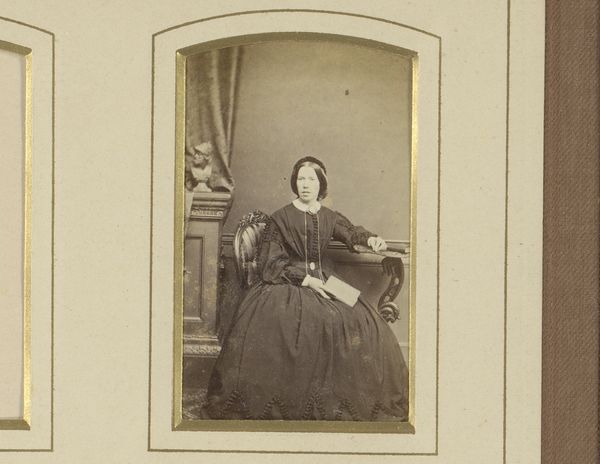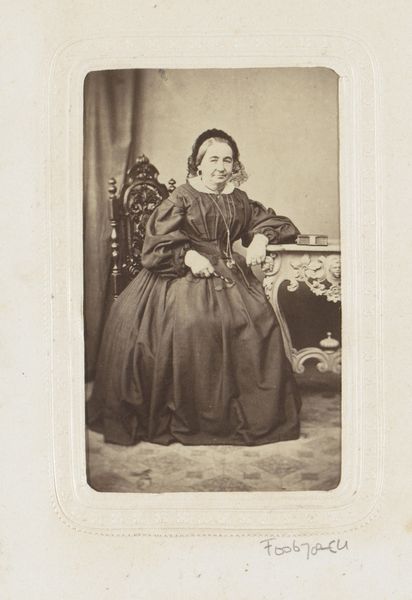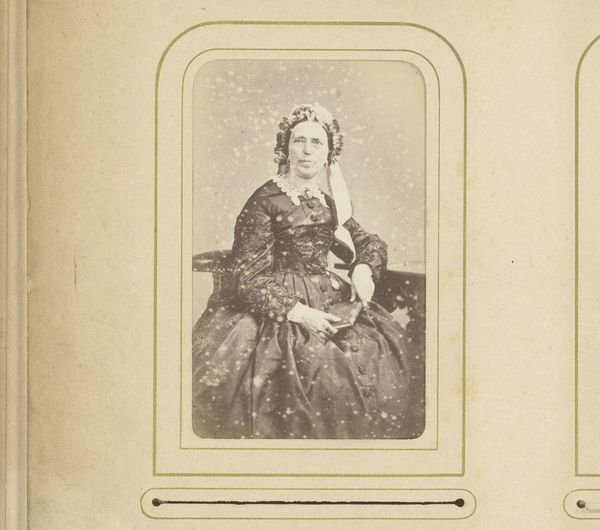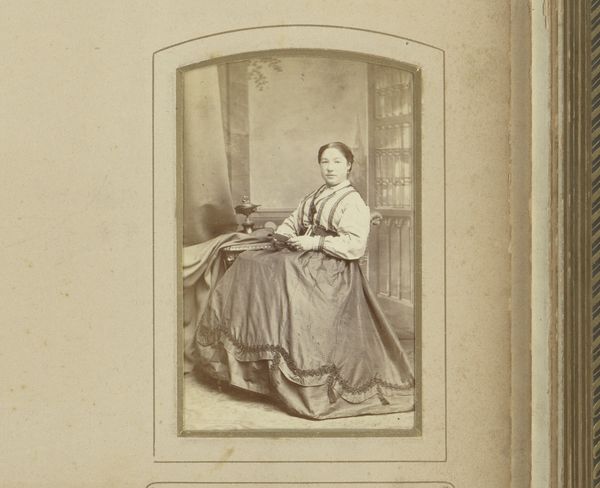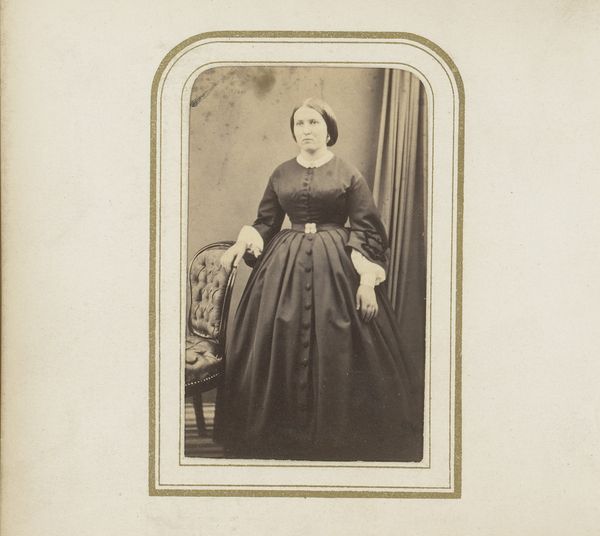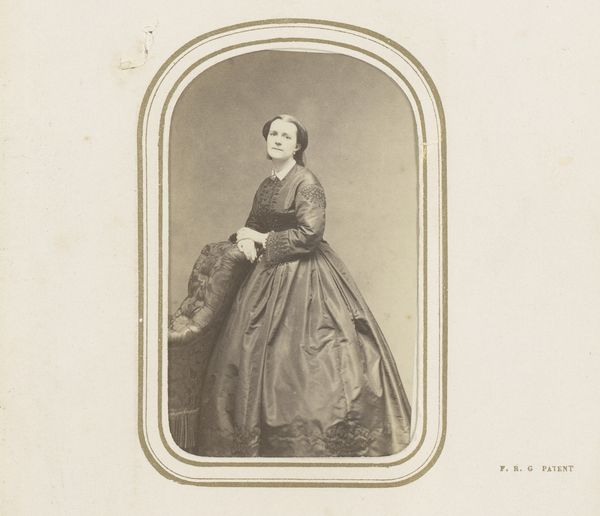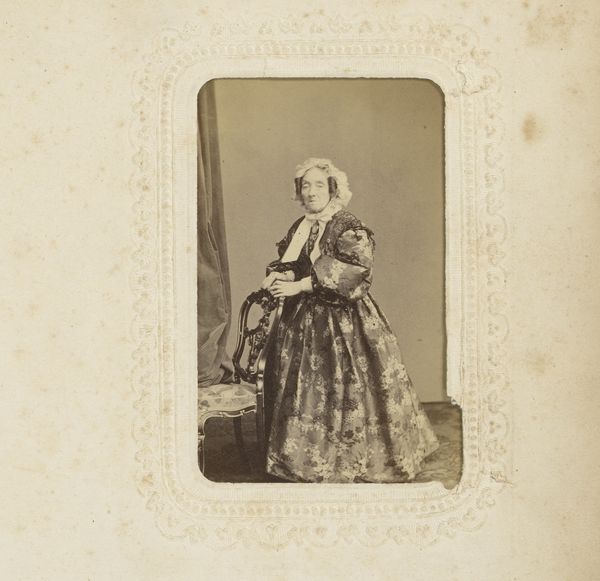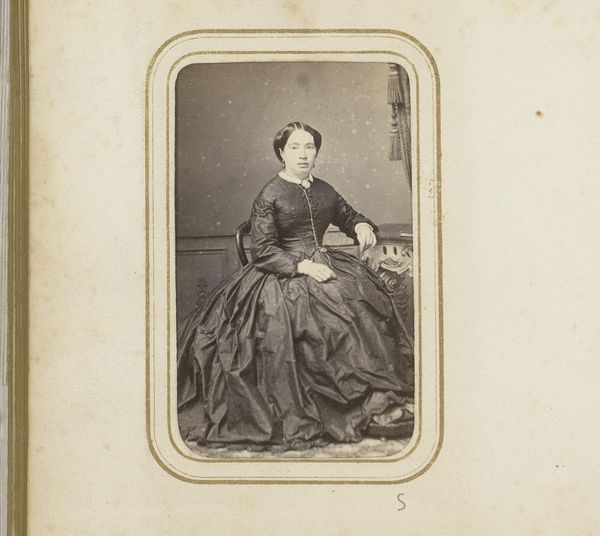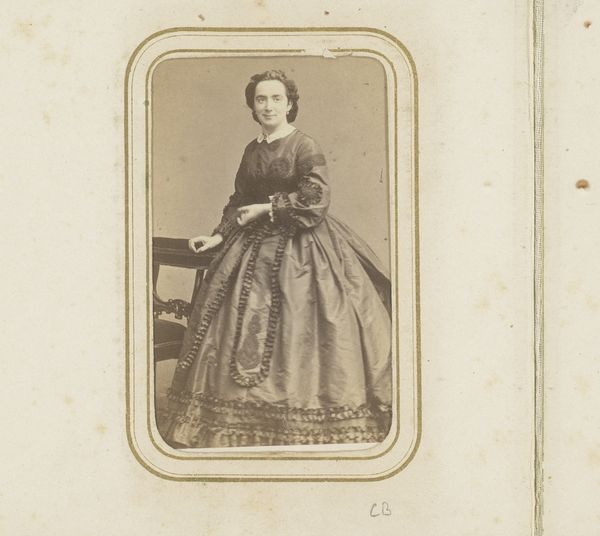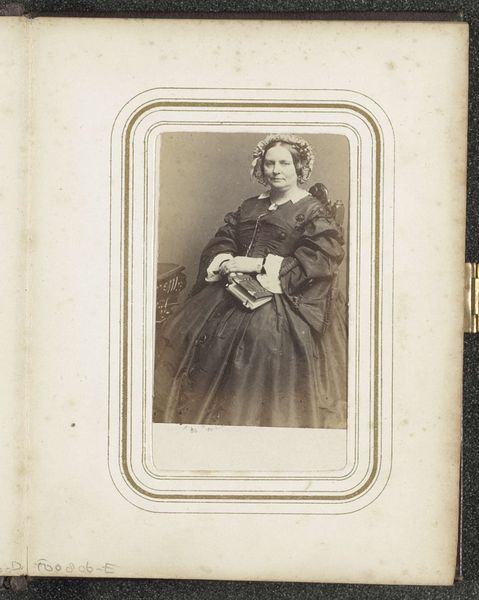
Dimensions: height 83 mm, width 50 mm
Copyright: Rijks Museum: Open Domain
Editor: We’re looking at Adolphe Legros' "Portret van een vrouw", a gelatin silver print photograph dating between 1860 and 1900. It strikes me as quite formal, almost austere. What's your take on this, considering the period it comes from? Curator: I think you've hit on something important. This isn't just a portrait, it's a document reflecting the shifting social landscape of the mid-to-late 19th century. Photography was becoming increasingly accessible, transforming portraiture's role. The sternness we perceive isn't necessarily personal, but culturally constructed. Consider the role of photography at this time, and its public role of creating imagery that served a new kind of societal visibility. Editor: So, the image itself is shaped by the societal expectation surrounding photography at the time, more than a choice made by the subject or artist. Can you tell me more about how cultural expectations played a part in it? Curator: Well, who had access to being documented, for instance? Who determined what stories are recorded, and which ones are erased? Think of the sitter's clothing, her pose, the inclusion of books as props...These details signal status and intellect, things that are highly valued within the growing middle class of the era, who had both money and status at stake. Did photography perpetuate certain stereotypes through these symbols? Absolutely. Editor: That’s really fascinating! I hadn’t thought about photography’s role in solidifying social hierarchies. I guess that formal composition we see speaks volumes about the cultural values of the time. Curator: Precisely. By understanding photography's socio-political influence, we gain a more nuanced understanding not only of the artwork, but also of ourselves and our ever-evolving perspectives of history.
Comments
No comments
Be the first to comment and join the conversation on the ultimate creative platform.
